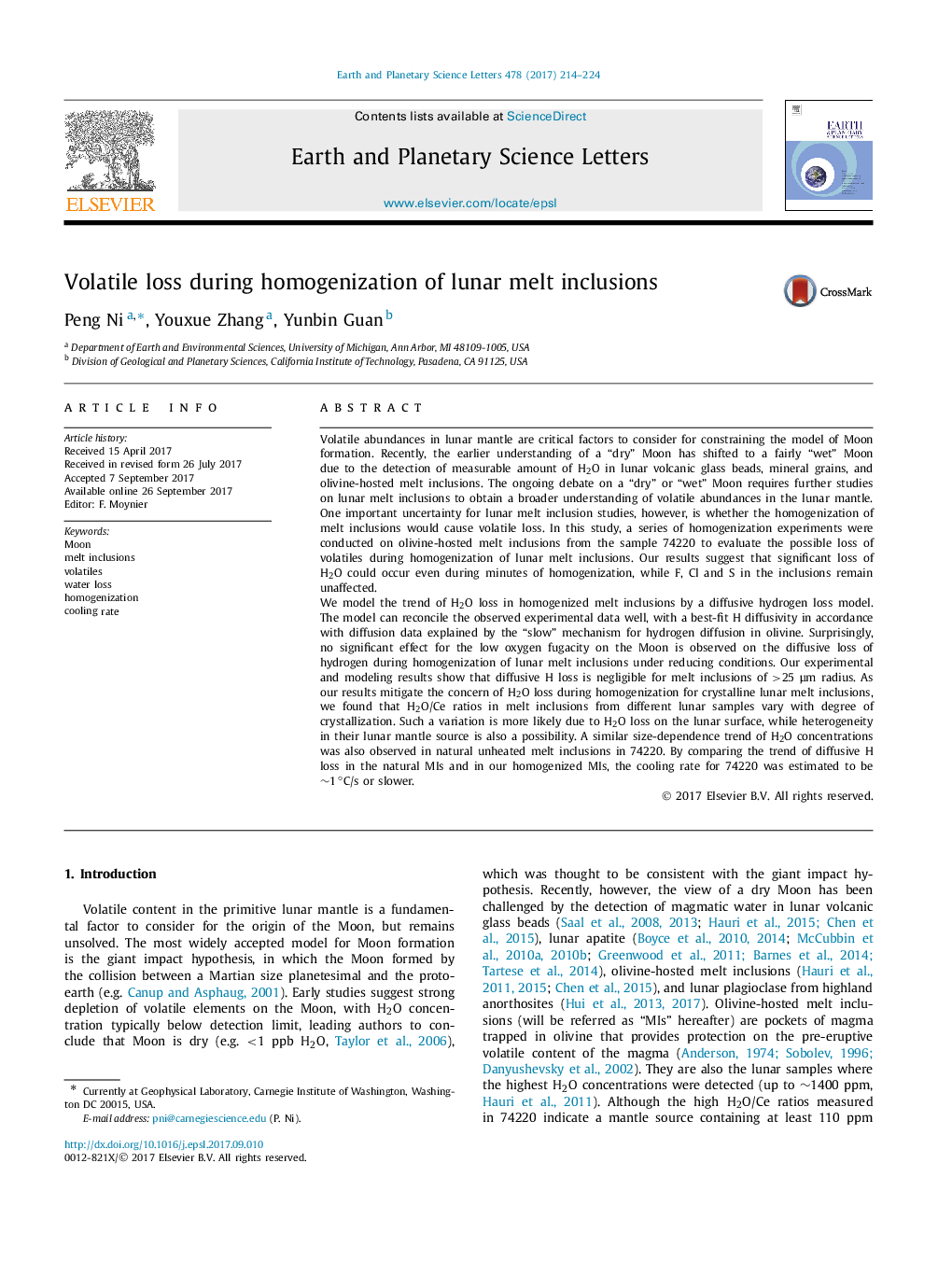| Article ID | Journal | Published Year | Pages | File Type |
|---|---|---|---|---|
| 5779570 | Earth and Planetary Science Letters | 2017 | 11 Pages |
Abstract
We model the trend of H2O loss in homogenized melt inclusions by a diffusive hydrogen loss model. The model can reconcile the observed experimental data well, with a best-fit H diffusivity in accordance with diffusion data explained by the “slow” mechanism for hydrogen diffusion in olivine. Surprisingly, no significant effect for the low oxygen fugacity on the Moon is observed on the diffusive loss of hydrogen during homogenization of lunar melt inclusions under reducing conditions. Our experimental and modeling results show that diffusive H loss is negligible for melt inclusions of >25 μm radius. As our results mitigate the concern of H2O loss during homogenization for crystalline lunar melt inclusions, we found that H2O/Ce ratios in melt inclusions from different lunar samples vary with degree of crystallization. Such a variation is more likely due to H2O loss on the lunar surface, while heterogeneity in their lunar mantle source is also a possibility. A similar size-dependence trend of H2O concentrations was also observed in natural unheated melt inclusions in 74220. By comparing the trend of diffusive H loss in the natural MIs and in our homogenized MIs, the cooling rate for 74220 was estimated to be â¼1â°C/s or slower.
Related Topics
Physical Sciences and Engineering
Earth and Planetary Sciences
Earth and Planetary Sciences (General)
Authors
Peng Ni, Youxue Zhang, Yunbin Guan,
